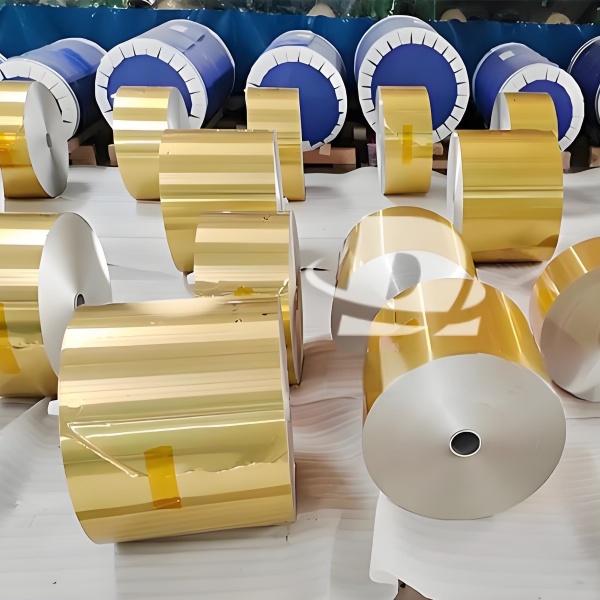 Food Grade Aluminum Foil Large Rolls Use Household Packaging
Food Grade Aluminum Foil Large Rolls Use Household Packaging
Aluminum-plastic composite cans are made of aluminum foil, plastic film, and kraft paper (cardboard), which can be made into square, cylindrical, rectangular, cone and other forms of packaging cans. Among them, cylindrical aluminum foil composite cans (hereinafter referred to as LFG cans) first appeared in the United States, and now many countries use this type of packaging. LFG cans are characterized by light weight and low price, about 20% lighter than aluminum cans, and about 20% less cost than tinplate cans. Of course, they are cheaper than aluminum cans; they have good moisture resistance, airtightness and shading for liquid and solid contents. Performance and barrier properties, especially to avoid the pollution of the welding seam of ordinary tinplate cans; moderate stiffness, mechanical strength, high compressive strength, axial crushing force and end cap release force, especially suitable for frozen food packaging .
.jpg)
This kind of can is generally divided into four parts: outer surface layer, cardboard layer, inner lining layer and inner surface layer. The outer surface layer is the label layer, used for printing trademarks and other graphics, and can be made of paper, plastic film or aluminum foil plastic composite materials; the cardboard layer is made of 2 to 3 layers of long fiber cardboard to ensure the rigidity and mechanical strength of the can body; the inner lining layer is The main part of the can body acts as a barrier layer to prevent moisture, permeation, and light. Therefore, composite materials mainly made of aluminum foil are used. Commonly used are plastic-coated aluminum foil, aluminum-plastic composite material or aluminum-plastic-paper composite material. At the same time, due to its good processing performance, the number of composite layers and structure can be flexibly changed according to different packaging requirements.
This composite material is also non-toxic, tasteless, and does not pollute the contents. It can be reused and recycled. Using it to replace tinplate and other thin metal cans can avoid pollution caused by metal welds and further reduce costs. And improve economic efficiency. At present, LFG cans made of this material have been widely used in the packaging of engine oil and some puffed foods such as potato chips, and will gradually occupy new areas such as pressure vessels and cooking cans. Such as further improvement in the strength of the tank body, end cap structure, etc., and continuous improvement of the quality of the LGF tank, it can also occupy a place in the liquid packaging container.
Aluminium House hold Foil For Food Itsms Packing In the selection of high-temperature cooking bags, the preferred material is aluminum foil


.jpg)


